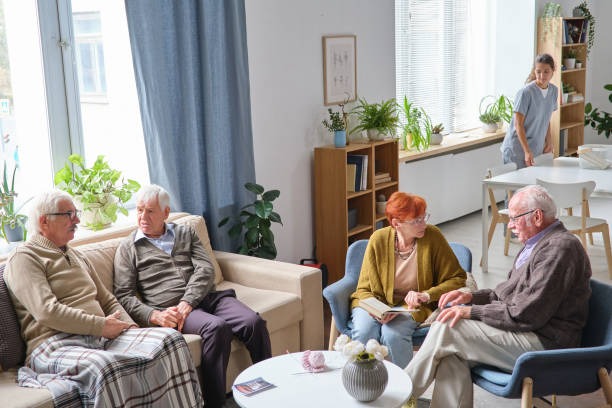The move into assisted living can be a monumental life change for older adults. While the transition brings improved community connection, safety, and access to care, it also comes with feelings of uncertainty and loss. Families and caregivers play a crucial role in helping seniors adjust and thrive in a new setting. Here, we list several compassionate ways to help older loved ones build fulfilling, joyful lives in assisted living.
Encouraging Emotional Adjustment
The emotional effects of transitioning into an assisted living environment can be life-altering. Some seniors feel as if they’re losing their freedom, while others struggle with moving out of homes filled with memories. Holding space for these emotions is essential, as is acknowledging that it may be impossible to ‘fix’ your loved one’s anxiety, grief, and frustration.
Regular calls, visits, and kind gestures will remind them that they’re still valued, connected, and loved. Listening patiently and fostering open communication helps maintain trust and eases the emotional transition.
Promoting Social Engagement
One of the most significant benefits of assisted living is the socialization it provides. While some may not feel comfortable jumping into new hobbies right away, encouraging participation in book clubs, game nights, and communal meals will help older loved ones build new friendships and reduce feelings of loneliness and isolation.
Supporting Freedom of Choice
While assisted living communities offer help with everyday tasks, it’s important for older adults to retain control of their lives. Encouraging them to decide what to wear, what to do, and how to decorate their living space will reinforce their feelings of autonomy. Supporting and respecting their preferences shows that their opinions still matter, every day.
Building a Wellness-Focused Routine
Mental and physical health go together, especially when seniors move into assisted living. Help loved ones stay active by exploring community fitness programs and taking family walks when possible. Assisted living communities typically have wellness programs designed for seniors, including balance, stretching, and low-impact exercises.
Nutrition is equally important, and families should encourage proper hydration, healthy dietary habits, and scheduled mealtimes. Pairing these efforts with regular check-ups and consistent medication management ensures seniors’ stability and long-term comfort.
Making Their Spaces Unique
Turning an apartment into an inviting space can be comforting to a senior in unfamiliar surroundings. Bring in their favorite furnishings, books, blankets, and family photos. A personal touch will reduce anxiety and bring feelings of ease into a new setting.
Being Their Advocate
Staying involved in loved ones’ care shows continuing support. Attend meetings, stay informed about your family member’s health, and build relationships with community staff. If issues arise, communicate them proactively and respectfully. Advocacy does not mean micromanaging, it means standing beside your loved one to ensure that they get the dignity and care they deserve.
Celebrating Every Milestone
Assisted living isn’t just about the care seniors receive; it’s a place where memories are made. Celebrate holidays, birthdays, anniversaries, and milestones. Bring their favorite treats, retell family stories, and create new traditions that bring connection and happiness. Moments of joy, no matter how small, make seniors’ daily lives more meaningful while shifting the focus from what they’ve lost to what they’re gaining.
Building a New Life: It’s Possible
Helping an older adult thrive in assisted living requires patience, compassion, and involvement. By supporting their emotional well-being, encouraging independence, and maintaining connections, loved ones can move past the adjustment phase and flourish in their new surroundings. With empathy and care, assisted living can be a safe place and a warm, welcoming home.

